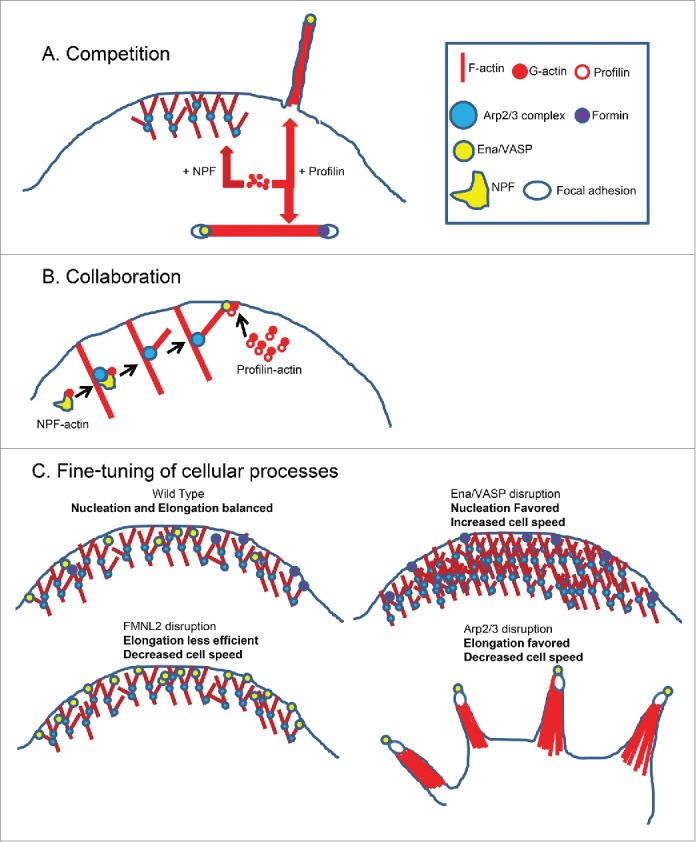Figure 1.

Functional consequences of monomer competition by actin assembly pathways. (A) Monomer competition allows for simultaneous assembly of diverse actin filament populations in the same cytoplasm. NPF-bound actin promotes dendritic actin nucleation and generation of lamellipodia while profilin-actin promotes stress fiber and filopodia elongation. (B) Homeostatic regulation of actin monomers allows distinct assembly pathways to collaboratively build cellular structures. In this example, NPF-actin promotes Arp2/3 complex branch nucleation while Ena/VASP is recruited to the daughter filament barbed end to elongate the growing filament using profilin-actin. (C) Collaboration and competition between actin assembly pathways may fine tune cellular processes by regulating the balance between nucleation of new filaments and elongation of existing filaments. Wild Type cells strike a balance between nucleation and elongation, while being capable of enhancing overall motility upon stimulation. Ena/VASP disruption leads to a denser dendritic actin network, shorter actin branches and enhanced cell motility speed, suggesting that nucleation is favored over branch elongation. Conversely, disruption of the formin FMNL2 makes branch elongation less efficient leading to decreased cell motility speed. Finally, disruption of Arp2/3 complex activity leads to loss of the branched actin network and a shift toward profilin-actin dependence and generation of long, unbranched protrusions containing Ena/VASP and focal adhesion proteins.
